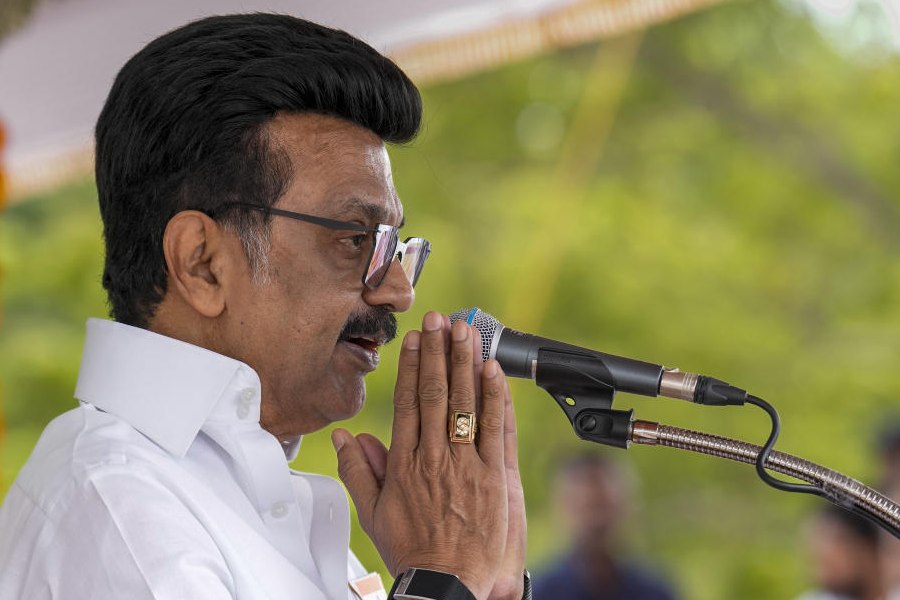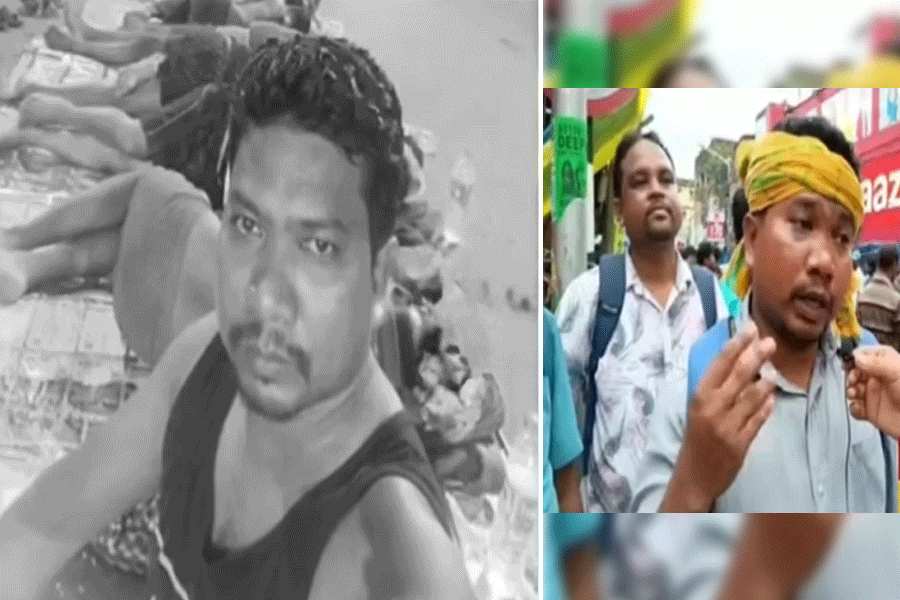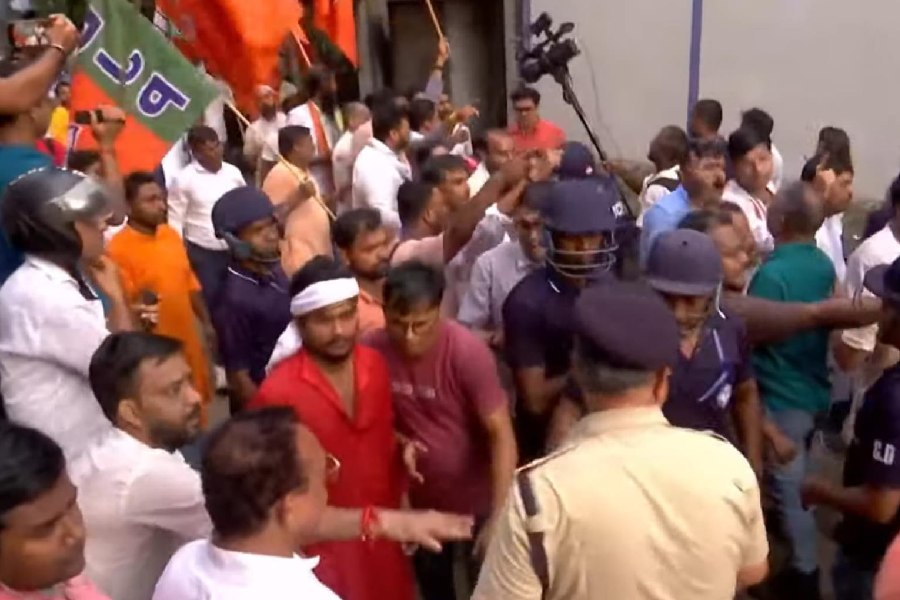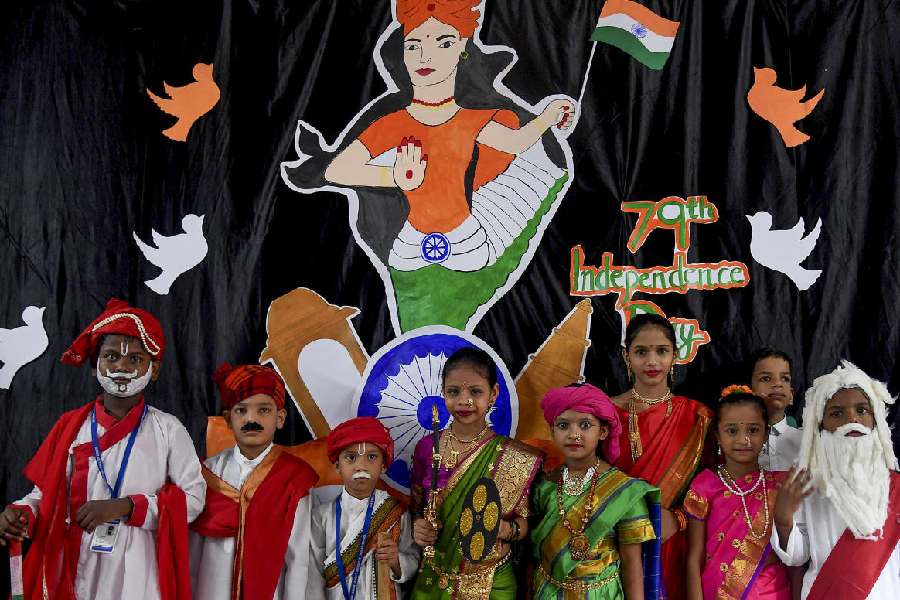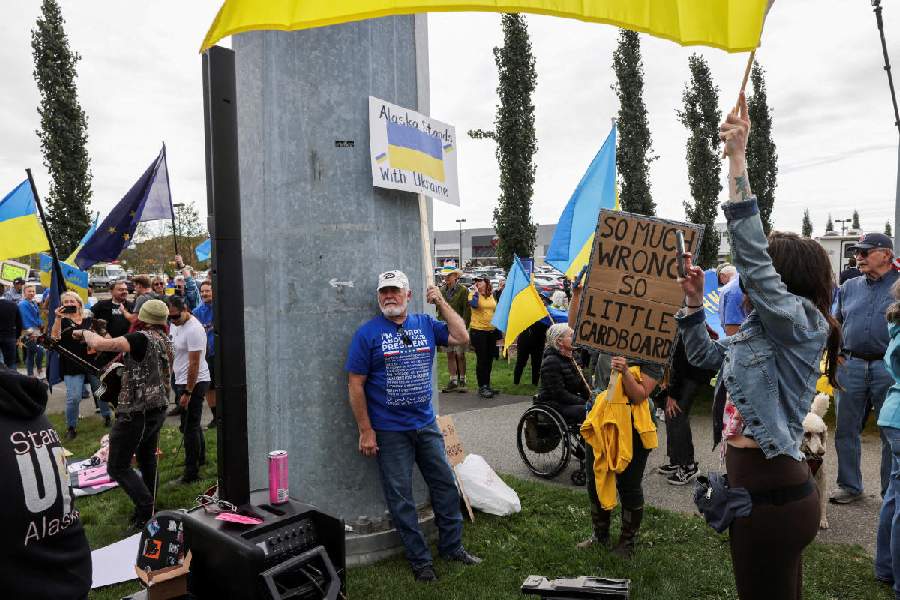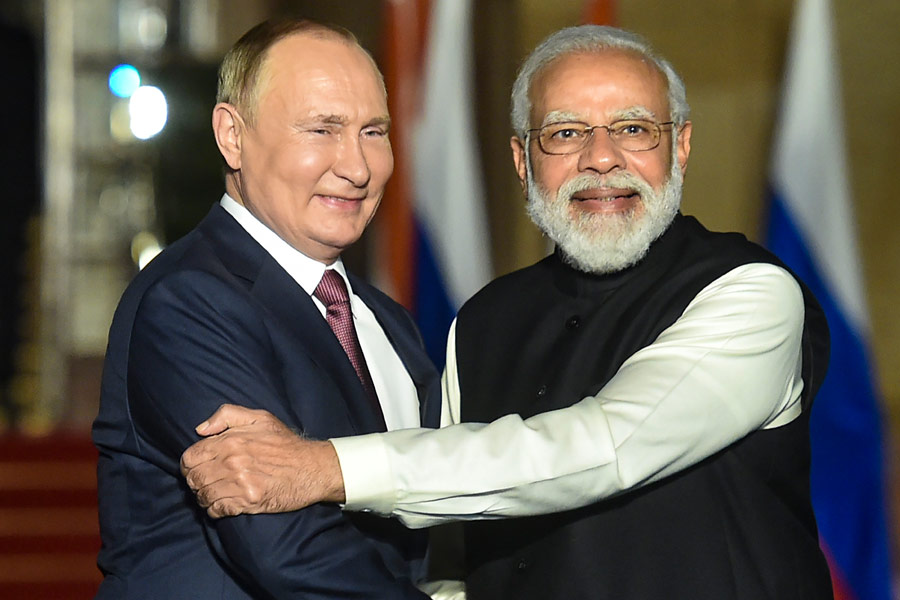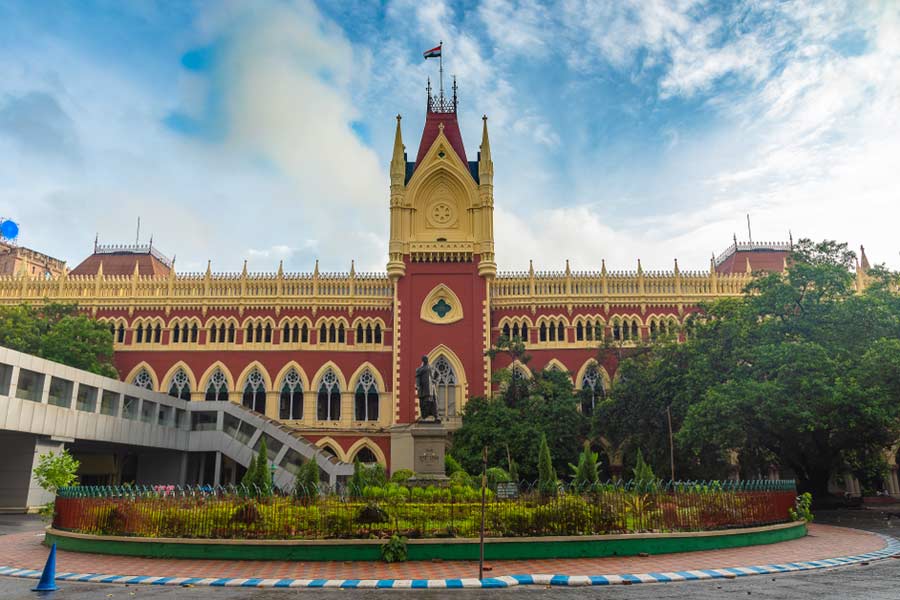
Veena Mushrif-Tripathy cleans bones recovered from a site at Talagada. Pictures by Badrika Nath Das
Cuttack, June 2: The demand for a museum at Ravenshaw University has gained momentum since historians and archaeologists discovered a skeleton dating back to the Chalcolithic (copper) Age at Talagada village near Khuntuni on the city outskirts.
Ravenshaw University assistant professor Umakant Mishra said the discovery assumed significance because no major work had been done on the Chalcolithic Age.
Veena Mushrif-Tripathy, human skeletal biologist from Pune's Deccan College Postgraduate and Research Institute, restructured the bones of the skeleton at Ravenshaw University.
The skeleton will be kept in the history department for display, further studies and references.
In the past, many sculptures that were part of the provincial museum functioning from the varsity, then Ravenshaw College, in 1938, were also found during excavations on the campus in 2013. All the sculptures and abandoned antiques are believed to be of the Ganga dynasty. The antiques include a 2.5 feet stone block depicting a hero with shield and swords.
The provincial museum, now called Odisha State Museum, functioned from Ravenshaw College. Later, with the shifting of the state capital from Cuttack to Bhubaneswar, the museum was also shifted to the new capital in 1947-48. Most of the important sculptures were shifted from Ravenshaw College, but other broken items had been abandoned on the campus since then.

"We will actively consider proposals for preserving the artefacts and sculptures by constructing a special provision for a museum inside the varsity," said Ravenshaw University vice-chancellor P.C. Sarangi.
The experts' team brought the skeleton and other artefacts found during excavation to the university on May 29. The Pune-based skeletal biologist, who is also an assistant professor at that institute, found that the skeleton belonged to a male aged around 30 years. She also recovered a turtle shell and carnelian beads from the burial ground near the skeleton. Burnished wares were also recovered from the spot.
Bone samples collected from the thigh and arm bones will be sent to Beta Analytic, a radiocarbon dating laboratory in Miami in the US, to ascertain the correct age by the use of a technique called accelerated mass spectroscopy. Other samples will also be sent to Centre for Cellular and Molecular Biology, Hyderabad, to know the genetic material and whether the man belonged to the local gene pool or a migrant community.
"The genetic study will also see the affiliation of the community to know the local ancestry and its identity," said Veena. Another Pune-based archaeologist, P. Joglekar, an expert on animal bones, will examine the animal bones collected from the excavation site near Talagada.


